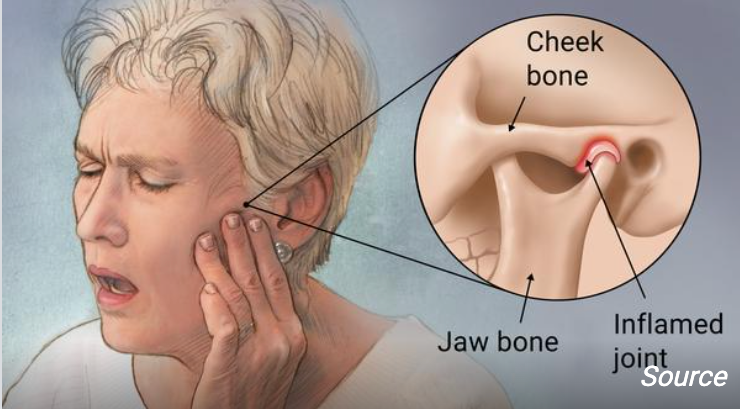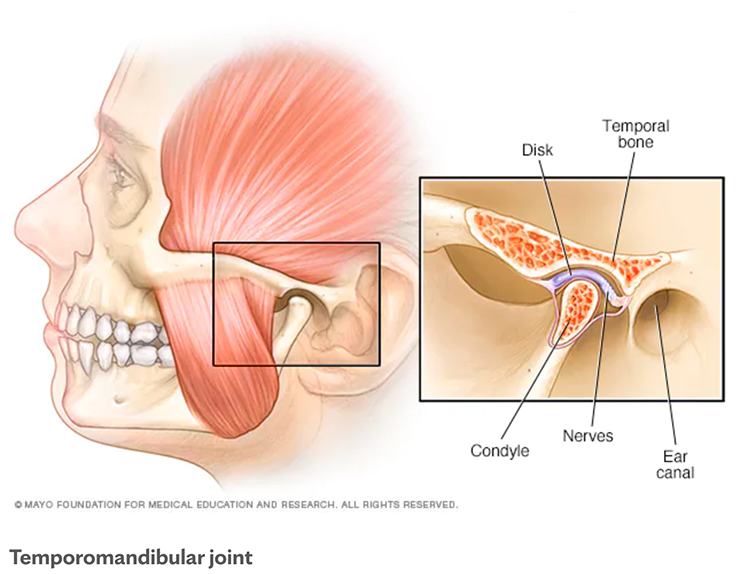The temporomandibular joint, or TMJ, is often overlooked as a potential source of headaches, dizziness, and orofacial pain. Frequently, people with TMJ dysfunction are fitted for a mouth guard to wear at night, but many do not realize that there are steps that can be taken to mitigate the symptoms during the day.

A physical therapist who specializes in the treatment of TMJ dysfunction is quite useful. As the name suggests, the temporomandibular joint is, in fact, a joint (it’s actually 2 joints that connect your lower jaw to your skull, with one on each side of the face just in front of the ear lobe), with a capsule, ligaments, bones, and a disc. Therefore, treatment is similar to other joints in the body, with a focus on relaxing muscles that are tight, correcting for muscular imbalance, and ensuring that there is good stability in all ranges of motion.

There are different types of TMJ disorders, and some patients fall into multiple categories. In general, the diagnosis falls into 3 classifications, with different treatments necessary for each. These include masticatory muscle dysfunction, anterior disc displacement with reduction of temporomandibular joints (TMJ), and anterior disc displacement without reduction of temporomandibular joints (TMJ)
A lot of physical therapy intervention for the treatment of TMJ disorders is focused on education. For instance, you may need to retrain your jaw to spend more time in a relaxed position. Sit up tall, with your lips closed but your teeth not touching. If it is comfortable, place your tongue on the roof of your mouth just behind your top teeth, just resting, not pressing. (You can also think about saying the word “mine” which will help you achieve this position). This is the “resting position” of your jaw, where the muscles and ligaments are most relaxed. Setting reminders such as timers or using Post-it notes can be helpful to reinforce this throughout the day. Many people unknowingly hold tension in their jaw, so a simple adjustment such as this can make a huge difference. Postural education and awareness can also have a positive impact.
If you have been diagnosed with TMJ dysfunction or even if you suspect that some of your symptoms may be related to your jaw, ask your dentist or your primary care physician for a referral to physical therapy. Make sure you are seeing someone who has taken additional courses on TMJ, as it is somewhat of a specialty. Be ready to make positive changes in your lifestyle and see positive results in your symptoms!
Dr. Kelsey Hanlon PT, DPT
WWS Physical Therapy and Vestibular Rehabilitation
Doylestown, Bucks County, Pennsylvania
(215) 489-3234

Leave a Reply